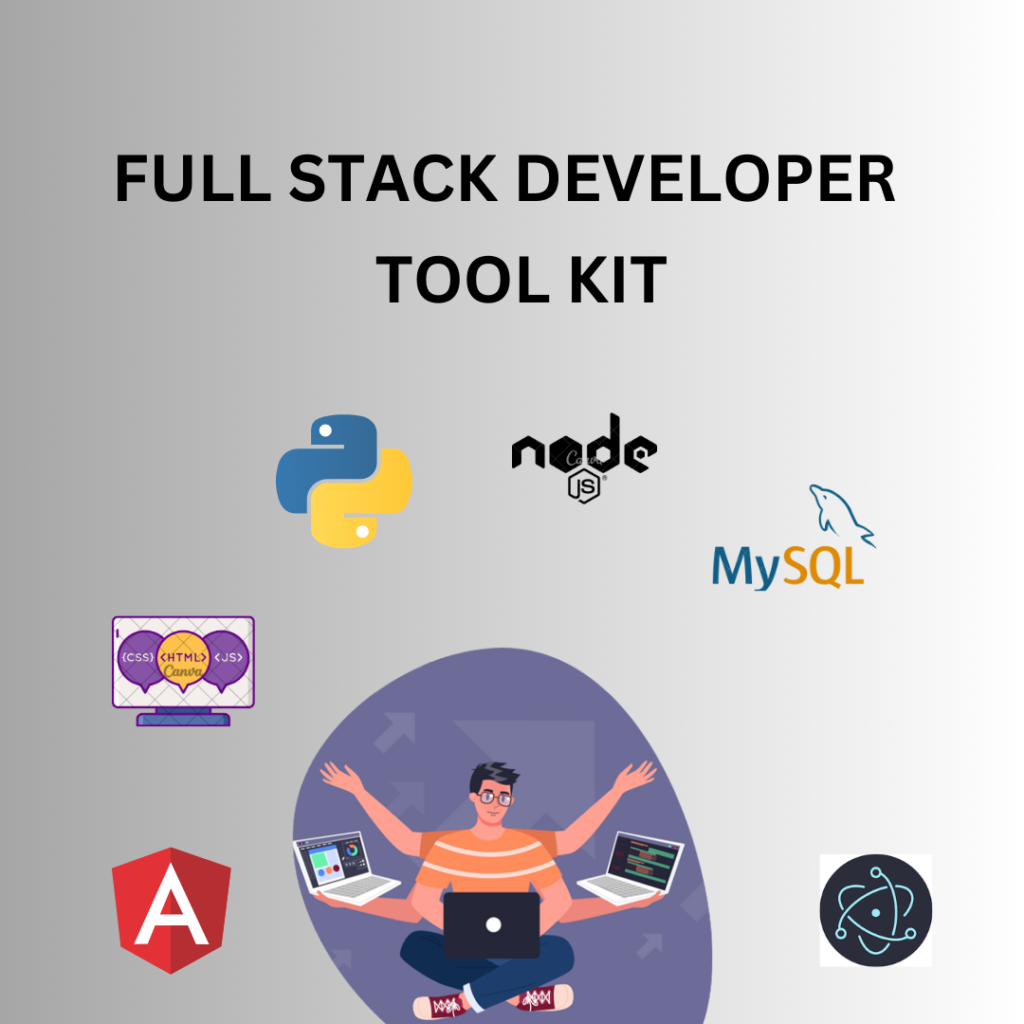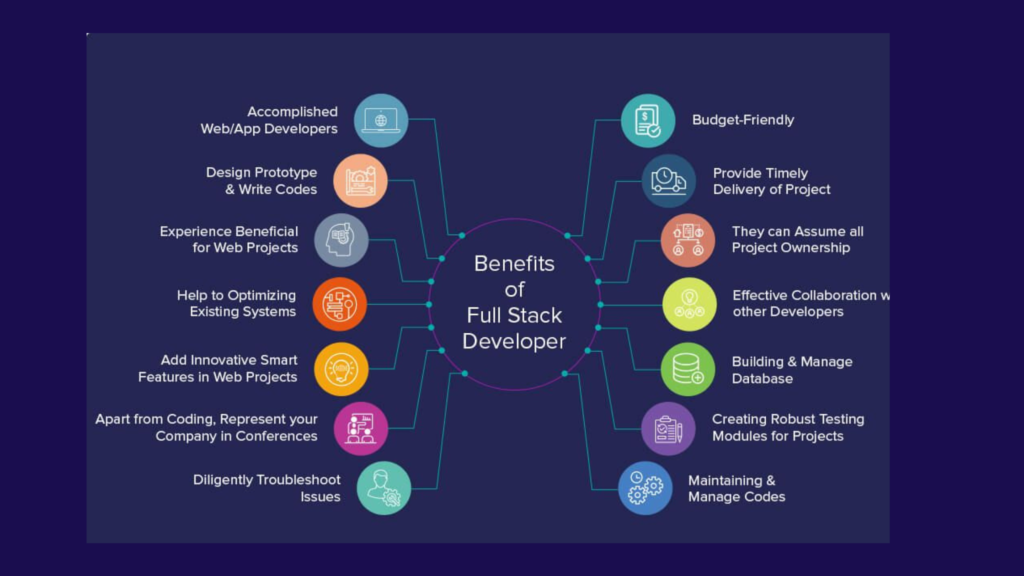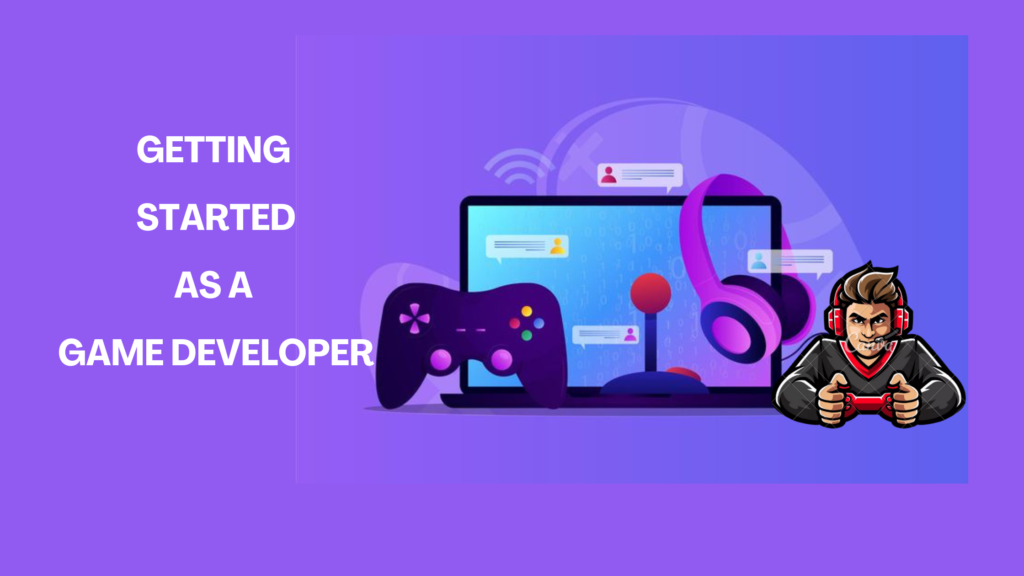Introduction
In today’s fast-paced digital landscape, Full Stack Developer has evolved into a complex, multifaceted discipline. As businesses and individuals alike strive to establish and enhance their online presence, the demand for versatile and proficient developers has skyrocketed. Among these tech-savvy professionals, one role is indispensable: the Full Stack Developer. In this article, we delve into the world of full-stack development, defining what it means and uncovering why these individuals are so highly sought after in the tech industry.
- What is a Full Stack Developer?
- Why are Full Stack Developers in High Demand?
- The Role of a Full Stack Developer in Web Development Projects
- The Essential Full Stack Developer Education Pathway
- Essential Skills and Technologies for Full Stack Developers
- A Day in the Life of a Full Stack Developer: Navigating Challenges and Crafting Solutions
- Conclusion: The Dynamic Life of a Full Stack Developer
- Conclusion and Encouragement: Embark on Your Full Stack Developer Journey
- Encouragement to Begin Your Journey
- External links
- FAQs
What is a Full Stack Developer?
A Full Stack Developer is a digital maestro who possesses a unique blend of skills and expertise, enabling them to tackle both the front-end and back-end aspects of web development. Unlike specialists who focus solely on one aspect of a project, Full Stack Developers are the Swiss Army knives of web development. They possess a well-rounded skill set that encompasses various programming languages, frameworks, and tools, making them capable of handling every stage of a web development project.

Why are Full Stack Developers in High Demand?
The high demand for Full Stack Developers can be attributed to several key factors:
- Cost Efficiency: Employing a Full Stack Developer reduces the need to hire separate front-end and back-end specialists, saving organizations significant costs.
- Streamlined Development: Full Stack Developers can seamlessly navigate both the client and server sides of a project, resulting in faster development cycles and quicker time-to-market.
- Versatility: Full Stack Developers can adapt to changing project requirements and take on various roles within a development team, making them invaluable assets.
- Problem Solving: Their comprehensive understanding of the entire development process allows Full Stack Developers to identify and resolve issues efficiently.
- Startups and Small Businesses: Smaller organizations often require individuals who can handle multiple roles, making Full Stack Developers ideal for their needs.
The Role of a Full Stack Developer in Web Development Projects
In web development projects, Full Stack Developers play a pivotal role by bridging the gap between the front-end and back-end components. Their responsibilities include:
- Front-end Development: Full Stack Developers create the user interface and ensure a seamless user experience. They work with HTML, CSS, and JavaScript to design responsive and visually appealing websites.
- Back-end Development: On the server side, Full Stack Developers build the application logic, manage databases, and handle server configurations. They often work with programming languages like Python, Ruby, Node.js, or PHP.
- Database Management: Full Stack Developers design and maintain databases, ensuring data integrity and optimal performance.
- Optimization and Security: They are responsible for optimizing website performance, implementing security measures, and protecting against vulnerabilities.
The Essential Full Stack Developer Education Pathway
To embark on a journey as a Full Stack Developer, you don’t necessarily need a specific formal education. However, having a solid educational foundation in computer science or a related field can provide you with a strong starting point. Here are some basic education options that can help you kickstart your journey:
- Bachelor’s Degree in Computer Science or a Related Field:
- A bachelor’s degree in computer science, computer engineering, software engineering, or a related field provides a comprehensive education in programming, algorithms, data structures, and other fundamental concepts. It also lays the groundwork for advanced studies if you choose to pursue them later.
- Online Coding Bootcamps:
- Coding boot camps offer intensive, focused training in web development and often cover both front-end and back-end technologies. They are designed to quickly equip you with the skills needed to start a career as a full-stack developer.
- Self-Taught Learning:
- Many successful full-stack developers are self-taught. With a plethora of online resources, tutorials, and courses available, you can learn web development at your own pace. Platforms like freeCodeCamp, Udemy, Coursera, and YouTube offer a wealth of free and paid courses.
- Associate’s Degree or Technical Diploma:
- Some community colleges and technical institutes offer associate’s degree programs or technical diplomas in web development or related fields. These programs provide a condensed curriculum focused on practical skills.
- Advanced Degrees (Optional):
- While not strictly necessary, pursuing a master’s degree or higher in computer science or a related field can offer a deeper understanding of advanced concepts in web development, software engineering, and computer science in general.
- Continuous Learning and Professional Development:
- Regardless of your initial education, the field of web development is constantly evolving. Continuous learning through online courses, workshops, and attending conferences can help you stay updated with the latest technologies and trends.
Remember, what matters most in becoming a successful full-stack developer is not necessarily your formal education, but your ability to learn, adapt, and apply your knowledge effectively. Practical coding experience, building projects, and having a strong portfolio will be invaluable as you progress in your journey.

Essential Skills and Technologies for Full Stack Developers
Becoming a proficient Full Stack Developer requires a diverse skill set that straddles the worlds of both front-end and back-end development. In this section, we’ll explore the key skills and technologies that are essential for those aspiring to master this challenging but rewarding role. We’ll also delve into why a full-stack developer’s proficiency in both front-end and back-end development is paramount in today’s tech landscape.
Key Skills and Technologies for Full Stack Developers
- HTML/CSS: Full Stack Developers must have a strong foundation in HTML (Hypertext Markup Language) and CSS (Cascading Style Sheets) as these are the building blocks of web development. HTML is used to structure web content, while CSS is essential for styling and layout.
- JavaScript: Proficiency in JavaScript is crucial for adding interactivity and functionality to websites. Full Stack Developers should be comfortable with JavaScript libraries and frameworks like React, Angular, or Vue.js for front-end development.
- Front-End Frameworks: Mastery of front-end frameworks such as Bootstrap, Foundation, or Materialize is essential for creating responsive and visually appealing user interfaces.
- Version Control/Git: Full Stack Developers should be well-versed in version control systems like Git. This enables efficient collaboration with team members and the ability to track code changes.
- Server-Side Programming Languages: Knowledge of server-side programming languages like Node.js, Python, Ruby, PHP, or Java is crucial for back-end development.
- Back-End Frameworks: Familiarity with back-end frameworks such as Express.js (Node.js), Ruby on Rails, Django (Python), or Laravel (PHP) is necessary for building the server-side logic of web applications.
- Databases: Full Stack developers need to understand databases, including both relational databases (e.g., MySQL, PostgreSQL) and NoSQL databases (e.g., MongoDB).Crafting Your Path to Mastery: A Roadmap for Aspiring Full Stack Developers
Becoming a Full Stack Developer is akin to embarking on an exhilarating journey through the ever-evolving landscape of web development. But, like any journey, it requires a roadmap and a sense of direction. In this section, we’ll chart a recommended learning path for aspiring Full Stack Developers, guiding you through the essential stages of skill acquisition and knowledge accumulation.
Step 1: Lay the Foundation with HTML, CSS, and JavaScript
Begin your journey by mastering the bedrock technologies of web development:
- HTML (Hypertext Markup Language): Learn how to structure web content, create forms, and understand the importance of semantics in web design.
- CSS (Cascading Style Sheets): Dive into styling web pages, exploring layouts, typography, and responsive design techniques.
- JavaScript: Develop proficiency in JavaScript, focusing on essential concepts like variables, functions, loops, and DOM manipulation.
Step 2: Explore Front-End Frameworks
- Choose a Framework: Select a front-end framework such as React, Angular, or Vue.js based on your preferences and the job market in your area.
- Deep Dive: Master your chosen framework, building small projects to gain hands-on experience and explore advanced features.
Step 3: Understand Version Control
- Git: Learn Git, a version control system, and platforms like GitHub or GitLab for collaboration. Understand branching, merging, and resolving conflicts.
Step 4: Dive into Back-End Development
- Pick a Language: Choose a back-end programming language that aligns with your goals. Common options include Node.js, Python, Ruby, or PHP.
- Learn Server-Side Frameworks: Explore back-end frameworks like Express.js (Node.js), Ruby on Rails, Django (Python), or Laravel (PHP).
Step 5: Database Management
- Relational and NoSQL Databases: Gain knowledge in both relational databases (e.g., MySQL, PostgreSQL) and NoSQL databases (e.g., MongoDB).
- Database Design: Learn to design efficient database schemas, understand normalization, and work with database management systems.
Step 6: Build and Deploy Projects
- Hands-On Projects: Apply your skills by building personal projects that encompass front-end and back-end development, databases, and third-party integrations.
- Hosting: Explore cloud platforms like AWS, Heroku, or Firebase for deploying your web applications.
Step 7: API Integration and Security
- APIs: Learn how to work with external APIs to fetch data and integrate third-party services into your applications.
- Security: Dive into web security best practices, understanding common vulnerabilities and how to protect against them (e.g., XSS, SQL injection).
Step 8: Continuous Learning and Specialization
- Stay Updated: Keep abreast of industry trends, new technologies, and best practices. Follow blogs, attend conferences, and join developer communities.
- Consider Specialization: Depending on your interests, consider specializing in areas like DevOps, mobile app development, or machine learning to broaden your skill set.
Step 9: Build Your Portfolio and Network
- Portfolio: Showcase your projects, code samples, and achievements on a personal website or GitHub repository. Make your portfolio a testament to your skills.
- Networking: Join developer forums, attend meetups, and connect with fellow developers. Networking can lead to job opportunities and collaborations.
Step 10: Job Search and Beyond
- Prepare for Interviews: Brush up on data structures, algorithms, and common interview questions. Practice coding challenges on platforms like LeetCode or HackerRank.
- Apply for Jobs: Start applying for entry-level or junior full-stack developer positions, showcasing your portfolio and skills in your applications and interviews.
Remember, becoming a Full Stack Developer is not a sprint; it’s a marathon. Be patient with yourself, embrace challenges, and stay curious. The technology landscape is in constant flux, and adaptability is a key trait of successful Full Stack Developers. Follow this roadmap, and you’ll be well on your way to mastering the art of full-stack development.
- APIs (Application Programming Interfaces): Proficiency in working with APIs is important for integrating third-party services and data into web applications.
- Web Servers/Hosting: Knowledge of web servers (e.g., Apache, Nginx) and hosting platforms (e.g., AWS, Heroku, Firebase) is vital for deploying and managing web applications.
- Security Best Practices: Full-stack developers should be aware of security best practices to protect web applications from common vulnerabilities like cross-site scripting (XSS) and SQL injection.

A Day in the Life of a Full Stack Developer: Navigating Challenges and Crafting Solutions
The life of a Full Stack Developer is a dynamic journey filled with a blend of creativity, problem-solving, and technical prowess. In this article, we’ll take you through a typical day in the life of a Full Stack Developer, shedding light on their responsibilities, the challenges they encounter, and the innovative solutions they employ to excel in their roles.
Morning: The Start of a Productive Day
- Daily Planning: A Full Stack Developer’s Day often begins with a cup of coffee and a quick review of their to-do list. They plan their tasks, prioritize projects, and set achievable goals for the day.
- Front-End Development: Mornings are typically devoted to front-end development tasks. This includes designing user interfaces, optimizing web layouts, and working with HTML, CSS, and JavaScript.
- Collaboration: Developers may engage in stand-up meetings with their teams, discussing progress, sharing insights, and addressing challenges. Effective communication is essential for teamwork.
Challenges and Solutions:
- Challenge: Balancing multiple projects and deadlines.
- Solution: Prioritizing tasks and using project management tools (e.g., Trello, Jira) to stay organized.
Afternoon: Navigating the Back-End Landscape
- Back-End Development: Afternoons are often dedicated to back-end development tasks. Developers work on server-side logic, databases, and server configurations using programming languages like Node.js, Python, Ruby, or PHP.
- Database Management: Managing databases, optimizing queries, and ensuring data integrity are crucial components of a Full Stack Developer’s day. They may also perform data migrations or updates.
- Problem-Solving: Challenges and bugs are an inherent part of development. Full Stack Developers spend time troubleshooting issues, debugging code, and finding efficient solutions.
Challenges and Solutions:
- Challenge: Debugging complex issues.
- Solution: Using debugging tools and collaborating with team members to find solutions.
Evening: Wrapping Up and Continuous Learning
- Project Updates: Developers update their teams on project progress, discussing achievements, challenges, and any adjustments needed to meet project goals.
- Continuous Learning: The tech landscape evolves rapidly, so full-stack developers dedicate time to learning new technologies, frameworks, and best practices.
- Personal Projects: Some developers work on personal coding projects in the evenings, experimenting with new ideas or contributing to open-source initiatives.
Challenges and Solutions:
- Challenge: Keeping up with industry changes.
- Solution: Regularly reading tech blogs, taking online courses, and attending webinars or conferences.
Night: Relaxation and Balance
- Work-Life Balance: Full-stack developers understand the importance of maintaining a healthy work-life balance. They use evenings to unwind, spend time with family and friends, or pursue hobbies.
- Time Management: Developers often set boundaries to avoid overworking, ensuring they are refreshed and ready for the next day’s challenges.
Challenges and Solutions:
- Challenge: Avoiding burnout.
- Solution: Prioritizing self-care, setting work hours, and unplugging from work-related tasks during leisure time.

Conclusion: The Dynamic Life of a Full Stack Developer
A day in the life of a full-stack developer is a compelling blend of creativity, problem-solving, and adaptability. They tackle front-end and back-end challenges, collaborate with teams, and embrace continuous learning. Challenges are met with innovative solutions, leading to the creation of seamless web experiences and a fulfilling career in the ever-evolving world of web development.
Conclusion and Encouragement: Embark on Your Full Stack Developer Journey
In this journey through the world of full-stack development, we’ve uncovered the multifaceted role of a full-stack developer, explored essential skills, and charted a roadmap for your learning path. As we conclude this exploration, it’s time to distill the key takeaways and offer a hearty dose of encouragement to inspire you to embark on your full stack developer journey.
Key Takeaways for Aspiring Full-Stack Developers
- Versatility is Key: Full-stack developers are the Swiss Army knives of web development. Cultivate a broad skill set encompassing both front-end and back-end technologies to excel in this role.
- Continuous Learning: Embrace the ever-evolving tech landscape. Stay curious and dedicated to lifelong learning to remain relevant and thrive in your career.
- Build a Strong Portfolio: Showcase your skills and creativity by building a diverse portfolio of projects. It’s your calling card in the competitive world of web development.
- Effective Communication: Collaboration and communication are essential. Develop not only your technical skills but also your ability to work in teams, communicate ideas clearly, and adapt to diverse work environments.
- Problem Solving: Full-stack developers are often troubleshooters. Develop your problem-solving skills, and see challenges as opportunities for growth.
- Networking Matters: Join developer communities, attend meetups, and connect with fellow developers. Networking can lead to job opportunities, collaborations, and personal growth.
Encouragement to Begin Your Journey
Now, as you stand at the threshold of your full-stack developer journey, remember this: every coder, every developer, every expert was once a beginner. You have the passion and curiosity needed to embark on this path, and your potential is limitless.
The road ahead may seem daunting, with its challenges and uncertainties, but every line of code you write, every project you complete, and every challenge you overcome will be a stepping stone toward your destination. Your journey will be filled with moments of frustration and triumph, but each one will be a valuable lesson.
Embrace the process of learning and growth. Celebrate your successes, no matter how small, and use your failures as opportunities to learn and improve. Remember that even the most seasoned full-stack developers once started where you are now.
As you set forth on your full-stack developer adventure, know that you are not alone. A vast community of developers and resources stands ready to support you. Whether you’re building your first website or diving into complex back-end systems, the path to becoming a full-stack developer is a rewarding one, filled with discovery, innovation, and the satisfaction of creating digital experiences.
So, take that first step today. Dive into coding, explore the intricacies of web development, and unleash your creativity. The world is waiting for your unique contributions, and your journey as a full-stack developer begins now. You’ve got this!
External links
Here are some external links that aspiring full-stack developers can explore for step 9, which involves building a portfolio and networking:
GitHub
GitHub is a popular platform for hosting and sharing your code. Create a GitHub account to showcase your coding projects and contributions to open-source projects. https://github.com/
LinkedIn is a powerful professional networking platform. Create a detailed profile highlighting your skills, and projects, and connect with other developers, recruiters, and potential collaborators. https://www.linkedin.com/
Dev.to
Dev.to is a community-driven platform for developers to share their knowledge, experiences, and projects. You can publish articles, showcase your work, and engage with other developers.https://dev.to/
CodePen
CodePen is a social development environment for front-end developers. You can create and share HTML, CSS, and JavaScript code snippets and projects.https://codepen.io/
Behance
Behance is a platform for showcasing creative work, including web development projects. It’s an excellent place to display the visual aspects of your projects.
Dribbble
Dribbble is a platform for designers and developers to showcase their work. It’s particularly useful if your portfolio includes web design elements.https://dribbble.com/
Stack Overflow Developer Story
Stack Overflow allows you to create a Developer Story to showcase your professional journey, skills, and contributions to the developer community.https://stackoverflow.com/
Meetup
Meetup is a platform for finding and building local communities. Join developer meetups in your area to network with peers, attend tech-related events, and collaborate on projects.https://www.meetup.com/
Reddit Programming Communities
Reddit has numerous programming-related subreddits where you can engage in discussions, share your work, and seek feedback from the community.
Many developers and tech industry professionals share their work, insights, and projects on Twitter. Follow relevant accounts and participate in discussions using hashtags like #WebDevelopment and #FullStack.
Remember to actively participate in these platforms by sharing your knowledge, offering help to others, and seeking advice. Building an online presence and a strong network can significantly enhance your career prospects as a Full Stack Developer.
FAQs
Q1: What is a Full Stack Developer?
A. A Full Stack Developer is a professional who possesses the skills and expertise to work on both the front-end and back-end aspects of web development. They are capable of handling the entire software development process, from designing user interfaces to managing databases and server-side logic.
Q2: What are the key skills required to become a Full Stack Developer?
A. Key skills for a Full Stack Developer typically include proficiency in front-end technologies like HTML, CSS, and JavaScript, as well as knowledge of back-end technologies such as databases (e.g., SQL, NoSQL), server-side scripting (e.g., Node.js, Python, Ruby), and version control systems.
Q3: How can I become a Full Stack Developer?
A. To become a Full Stack Developer, you should start by mastering the fundamental web development technologies, both front-end and back-end. This often involves learning programming languages, web frameworks, and gaining hands-on experience through personal projects or formal education like coding bootcamps or computer science degrees.
Q4: What are the advantages of being a Full Stack Developer?
A. Full Stack Developers have a broad skill set, making them versatile and in-demand in the job market. They can work on end-to-end development, which can lead to more job opportunities and potentially higher salaries.
Q5: Which programming languages should I learn to become a Full Stack Developer?
A. Common programming languages for Full Stack Development include JavaScript, Python, Ruby, Java, and PHP. The choice of language may depend on your project or job requirements.
Q6: What is the difference between front-end and back-end development for Full Stack Developers?
A. Front-end development focuses on creating the user interface and user experience of a website or application, while back-end development deals with server-side operations, databases, and business logic. Full Stack Developers work on both aspects to create a complete solution.
Q7: Do Full Stack Developer need to know about databases?
A. Yes, Full Stack Developer should have knowledge of databases as they are often responsible for database design, querying, and data management. Understanding database systems like MySQL, MongoDB, or PostgreSQL is beneficial.
Q8: Are there any tools or frameworks that Full Stack Developer commonly use?
A. Yes, Full Stack Developers often use various tools and frameworks to streamline their work. Some popular ones include React and Angular for front-end development, Node.js and Ruby on Rails for back-end development, and Git for version control.
Q9: How long does it take to become a proficient Full Stack Developer?
A. The time it takes to become proficient as a Full Stack Developer varies depending on your prior experience and the intensity of your learning efforts. It can take several months to a few years to acquire the necessary skills and experience.
Q10: What is the average salary of a Full Stack Developer?
A. The average salary of a Full Stack Developer varies by location, experience, and the specific job market.





